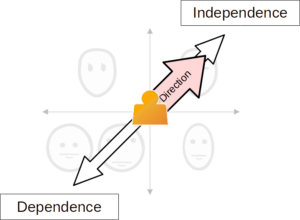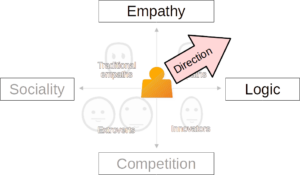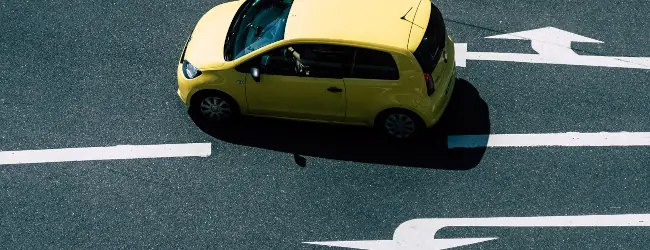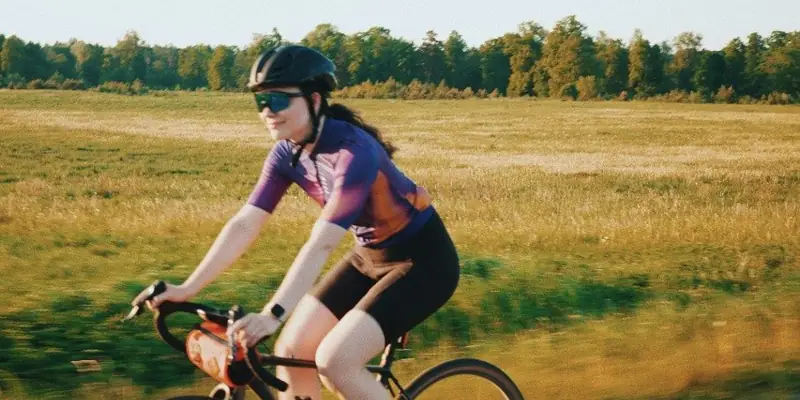In the previous article (this article), I talked about the direction in life. Today, I will talk about how to decide to move in one direction.
How to be prepared to go in one direction
Sometimes, we want to be prepared to go in one direction in life. Sacrificing something unimportant often makes it easier to get something more important.
However, we sometimes don’t know what to sacrifice and what we should not.
Some essentials should not be sacrificed. A typical example is our mental duality, which I explained recently in this blog. We have at least two contradictory wants.

For example, if we are empathic and creative, we might want to enjoy feeling emotions, but we also want to think logically while excluding emotional influences. We need both. Suppressing one side prevents us from having satisfaction.
On the other hand, we know that sometimes it is better to sacrifice something to get something. We don’t have to spend resources on things we don’t need.
How to avoid stagnation
They prevent our decision about the directions. Even if we wish to live our lives, we also want to fill our inferiority complex. We want to satisfy both.
That makes us stagnate.

Today, I will explain why giving up one direction leads to total satisfaction in life. This distinction might allow us to be prepared to progress in our lives.
Why we must give up one direction
If we want to go in one direction, we must give up the opposite direction because they are incompatible.
The diagram would make that relationship easy to understand. For example, assume we are empathic and creative and want to move in the direction of independence, as shown in the following image:

In this case, we must give up the direction of dependence because independence is opposed to dependence.
An example that satisfies both sides
On the other hand, we can satisfy empathy and logical senses because they can go hand in hand in the same direction, although they are contradictory. We can understand that ignoring one side leads to stagnation in the long run.

In other words, direction determines our areas of satisfaction. Although we can head in any direction, a direction that suits our personalities is limited.
Specific desires vs. desires caused by confusion
If we can head in the direction that suits us, we can also satisfy the desires of the opposite direction because we will understand that it is unnecessary for us.
There are two kinds of desires, as follows:
- Specific desires: We want to satisfy everything, even if they are contradictory. For example, we want to be active, but we also want a break. Both sides are important.
- Desires due to confusion about values: We misunderstand that something will fulfill our specific wants based on others’ experiences. Although it applies to others, it doesn’t apply to our nature. In this case, giving up the wrong direction satisfies us.

That is why we can change our lives by deciding in one direction. Specific desires and confusion about values are different.
Appropriate direction that gives us total satisfaction
Appropriate direction gives us overall satisfaction in our lives. We can live more comfortably with less patience, more hope for the future, and more energy.
On the other hand, if we allow an inferiority complex to drive us, our lives will be unfulfilled, no matter how much we endure, because we head in the opposite direction.

If we don’t know which direction suits us, we can choose randomly because we can modify our directions with feedback. Long-term struggles and stagnation indicate that we are going in a direction that doesn’t suit us. In this case, we can modify our direction based on our mental duality.
Either way, the direction determines our satisfaction with specific desires. We have to give up one direction to go in one direction. Although it seems to be sacrificing our desires, it is a way to satisfy them.
Conclusion
That is why giving up one direction leads to total satisfaction in life.
Specific desires and confusion about values are different.
This distinction might allow us to be prepared to progress in our lives.
Thank you for reading this article. I hope to see you in the next one.


